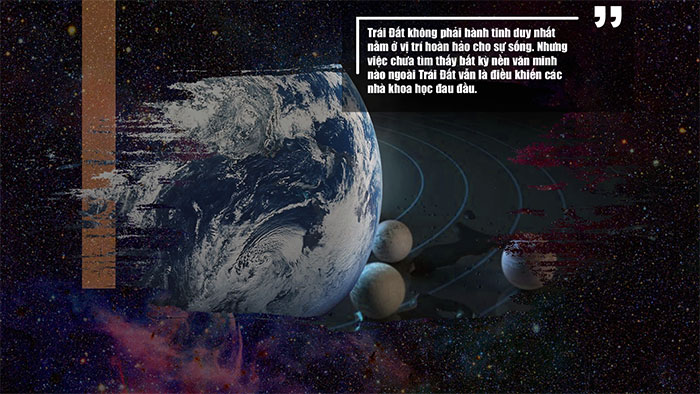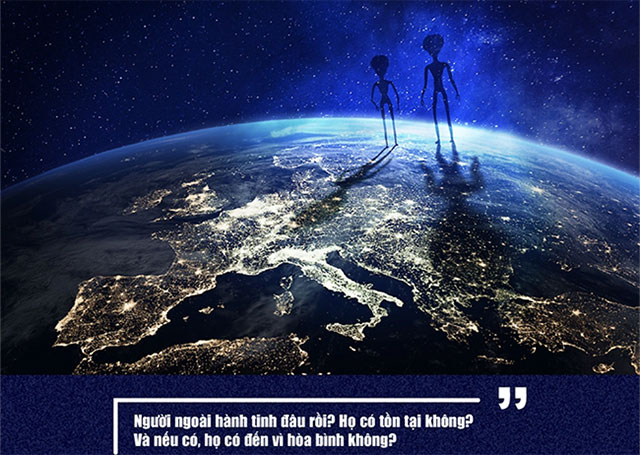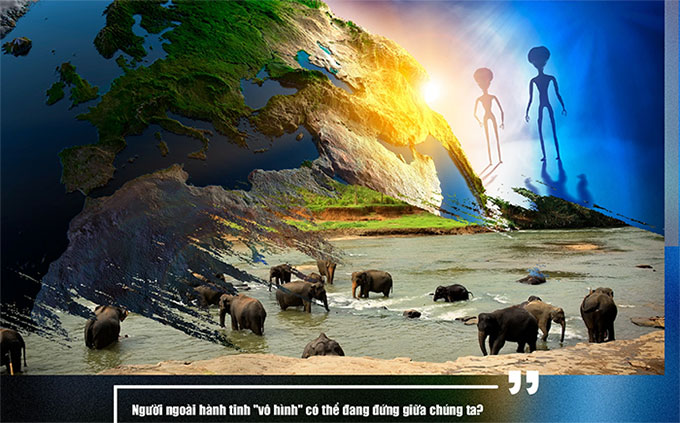We only fear what we do not understand and cannot control. In this vast universe, perhaps the most incomprehensible and uncontrollable thing is life itself. Why is life only found on Earth? Why have we not yet discovered any signs of life elsewhere?
Where are the aliens? Do they exist? And if they do, do they come in peace? Humanity has yet to find answers to these questions. However, many hypotheses and even paradoxes have been proposed to explain the mysteries of the universe. The most famous of these is the Fermi Paradox.
Conditions for Life to Exist and Why Earth is Perfect
Looking at the blue planet in the Solar System, we must acknowledge that we are fortunate. Earth is perfectly positioned relative to its central star, in this case, the Sun. This position is not too close, so Earth is not scorched like Mercury, and not too far, preventing our planet from freezing like Uranus.
This perfect position is known as the Habitable Zone, meaning the region suitable for life to develop. In this zone, the climate across the planet is neither too hot nor too cold.

Although we have dry, scorching deserts, such as Death Valley in California, where temperatures can reach over 55 degrees Celsius, or the town of Oymyakon in Siberia, Russia, which can drop to -40 degrees Celsius, these temperatures are still considered much less extreme compared to distant planets in the Solar System. This means they are still sufficient for water to exist in liquid form, cells to develop, and life to proliferate.
However, Earth is not the only planet with a favorable position in the galaxy. Statistics show that there is one such planet in every solar system. For example, Earth is the only planet in the Habitable Zone of our Solar System; or the exoplanet Proxima Centauri b, located about 4.2 light-years (1.3 parsecs) away in the constellation Centaurus. This is considered the closest known exoplanet and orbits within the habitable zone of its star.
Based on these hypotheses, for aliens to exist, they too must live in these perfect regions. From here, we just need to count the number of solar systems with Habitable Zones to find planets that may harbor life.
According to NASA’s estimates, there are 250 billion stars in our galaxy alone, and if we look beyond, there are over 100 billion other galaxies.
This means that if galaxies are of similar size, the universe contains over 70 trillion stars in the observable universe. If we only take 0.01% of those stars to create life, theoretically, there are far too many places for life to flourish.
According to Inverse.com, in 2013, astronauts estimated that there are at least about 6 billion Earth-like planets in our galaxy. Yet, the life outside of Earth that we have discovered since we began exploring the universe is a round zero.
This is when the Fermi Paradox is mentioned, as an explanation for all the puzzling disappearance of life.

The Fermi Paradox and the “Great Filter”
This paradox is named after physicist Enrico Fermi, who described the stark contradiction between the high probability of extraterrestrial life and the lack of evidence to verify it. According to him, what is even more frightening is that we may actually be alone in this vast universe, or perhaps we just haven’t been able to “see” them.
To explain this paradox, Fermi proposed an additional hypothesis about the existence of aliens called the “Great Filter”. According to this, our universe has existed for nearly 14 billion years, and no one disputes its vastness.
Yet, with all that time, the universe seems empty. There are no signs of advanced civilizations. From this, scientists think that there is a “something” preventing us or any other civilizations that may have existed from developing to the point of being able to communicate with higher civilizations.
This is an event, a filter to see whether a species has the capability to evolve further. No one knows what will happen when we actually overcome that challenge, but if we do not, that civilization will be extinguished.
This is “natural selection” – a decisive turning point in the development of a civilization or even in the survival of that civilization. However, the “Great Filter” hypothesis is not just that. Scientists divide the “Great Filter” into two scenarios: One is that this filtering process has already occurred, and the other is that it is still waiting for us ahead.

In each case, we arrive at different assumptions about the future of humanity. In the first scenario, if this filtering process has already occurred, humans may be the only intelligent beings left.
In places with other life forms, the hypothesis explains that during the development of living beings, something happened that caused other species to surrender. It could be a massive pandemic that wiped out all life, or it could be a gigantic asteroid, similar to what happened to the dinosaurs.
Whatever happened, we know that humanity has survived, which makes us the pioneering species, the first in the universe capable of exploring the endless world out there.
But there is also the second scenario, where the “Great Filter” has yet to occur. This hypothesis is even more widely believed, as it explains why we have not yet found any extraterrestrial civilizations.
This time, the “Great Filter” could be an event that we have not yet encountered. Therefore, we do not yet have the “pass” to reach the stars and communicate with higher civilizations.
One reason to bolster our belief in this is that supernatural phenomena sometimes appear in life, and it is thought that when extraterrestrial civilizations have been “careless,” we accidentally catch glimpses of them, even if just for a moment.
“Fermi understood that any civilization with a modest amount of rocket technology and a not-so-modest imperial incentive could quickly occupy the entire galaxy,” a representative of the Search for Extraterrestrial Intelligence (SETI) in Mountain View, California, wrote in an explanation of the Fermi Paradox. “In a few tens of millions of years, every star system could be brought under the wing of an empire. Tens of millions of years may sound like a long project, but in reality, it is quite short compared to the age of the galaxy, roughly a thousand times shorter.”

Helen Sharman, a British space biologist, even proposed a more frightening hypothesis, that aliens may be among us without anyone knowing.
“Do they resemble you and me, made of carbon and nitrogen? Perhaps not. They may be here right now, and we simply cannot see them, but can only feel them,” Helen explained.
This kind of life would exist in a new concept, tentatively called the “Dark Biosphere.” Helen emphasizes that these are not ghosts but rather undiscovered organisms that may have a different biochemical makeup.
This means that we cannot research and seek aliens in the usual way. In other words, we do not see them because this lies beyond human understanding.
Many Possibilities Are Also Believed
In 2015, scientists analyzing data from the Hubble Space Telescope and Kepler concluded that only about 8% of all potentially habitable worlds would exist in the universe around us when Earth formed about 4.5 billion years ago. Therefore, if extraterrestrial civilizations exist, they would also be very far away.
Another hypothesis suggests that life is too “fragile” to exist long-term on a planet, and we simply are not at the same stage as them. Research in 2016 explained that the early stages in the formation history of a rocky planet can be very favorable for life, often appearing about 500 million years or longer after the planet cools.
The history of our Earth seems to reinforce that conclusion, suggesting that life appeared about 4.1 billion years ago, but those good times may not last due to a series of issues such as the greenhouse effect or other climatic changes.
“Life may be very rare in the universe not because it is difficult to start, but because the living environment does not allow it to be sustained beyond the first billion years,” researcher Aditya Chopra wrote in a study published in the journal Astrobiology. “It’s like trying to ride a wild bull. Most life falls away.”
Some thinkers suggest that civilizations may have a tendency to self-destruct shortly after achieving technological capabilities. Once again, Earth’s formation history provides materials that may explain this hypothesis.
In fact, humanity came alarmingly close to nuclear war during the “Cuban Missile Crisis” in 1962. Additionally, we may be in a process of “self-destruction” along with much of the other life on the planet through climate change, global warming, and the greenhouse effect. Scientists are working hard to prevent this, but can they?

















































